Many school subjects aren't so much important in their own right as they are useful in understanding others. Geography is such a subject, and while it's fascinating and fun to learn about the earth, its terrain, and its people anyway, it's absolutely essential if you intend to study history, science, or literature with any confidence or understanding.
As a result, we tend to privilege geography curricula that put the study in some kind of broader context as opposed to those programs that simply teach it all by itself. Fortunately, most of those we carry take this approach; bigger publishers like Bob Jones and A Beka place their geography texts within their history programs, usually at the beginning of high school.
But what is geography, anyway? Basically, it's the study of the earth, its features and inhabitants, its lands, and its phenomena (everything from climate to volcanoes). How it relates to other subjects should be fairly obvious: history is senseless without an idea of territories and regions, science relies entirely on observable phenomena, and literature is as much a product of cultures and places as individual authors.
Here is a quick summary of the Geography curricula we offer, in alphabetical order:
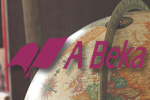 |
A Beka Geography Grades 3-9
A Beka supplements their history curriculum with geography workbooks (trivia- and map-based) starting at grade 3, but takes 9th grade to focus on geography. This course offers kids an in-depth look at the world's countries, both demographically and in terms of their physical geography. It is student-directed, and emphasizes hands-on map exercises.
|
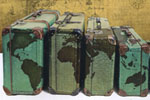 |
Around the World in 180 Days Grades 1-6
Around the World in 180 Days is the first product published by Apologia Press that was not written by Dr. Jay Wile. A unit study program, there are no stand-alone elements: instead, the student book presents a number of questions and a list of resources to help find the appropriate answers. This works well both as a geography/history course, and as an introduction to research and study skills.
|
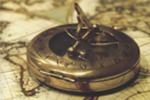 |
Beautiful Feet Geography Grades 2-8
An excellent way to get a sense of the interrelatedness of geography with other disciplines is the unit study approach. Beautiful Feet Geography uses the colorful and engaging Holling Clancy Holling books to integrate geography, history, literature, science and nature study. This way, students learn an often daunting subject, while enjoying a variety of sources and approaches.
|
 |
BJU Cultural Geography Grade 9
Unlike the program from A Beka, BJU Cultural Geography is more textbook-oriented. There are activities for students to complete, but they're much more about answering questions and written work than identifying places in an atlas. There's also an emphasis on people groups, so kids will get a good feel for the ethnic makeup of the earth's population.
|
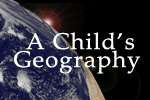 |
Child's Geography Grades 1-6
For a geography-centric program that uses a wide variety of texts, try any of the Child's Geography texts by Ann Voskamp. These texts are God-centered, so that kids learn everything from the perspective of studying God's Creation. Voskamp also attempts to use the same engaging style of V. M. Hillyer, but updated for a contemporary setting.
|
 |
Evan-Moor Geography Grades K-8
There are multiple Evan-Moor geography series designed to reinforce content students have learned elsewhere. Daily Geography Practice is the most comprehensive of these; other books offer unit studies based on continents, map skills, etc. These are excellent resources for reinforcement, but they don't comprise a complete geography curriculum.
|
 |
Geography Matters Grades K-12
The family of products from Geography Matters helps kids learn geography by cooking, map studies, workbooks, and the Galloping the Globe and Cantering the Country unit studies. Each book is colorful, kid-friendly, and genuinely educational without ever lapsing into boring or pointless exercises. While these aren't as comprehensive as some programs, they make excellent supplements.
|
 |
MCP Maps/Charts/Graphs Grades K-8
One of our favorite geography programs is Maps/Charts/Graphs. The focus is proficiency in map-reading: kids learn the cardinal directions, read legends and scales, interpret complex road maps, climatological maps, and topographical maps and charts. This isn't a complete course by any stretch, but it is a great place to start (the books are a good way to teach younger kids to follow directions).
|
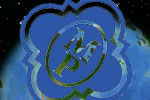 |
Memoria Press Geography Grades 3-6
If you're looking for an easy-to-use course to get your kids feet wet in the oceans of geography, this could be what you want: students will get a feel for the basics of world geography, and be able to identify each state and country on a map. The factual information is fairly cursory, and no research is required, but this could be beneficial if you want to encourage further study on your own.
|
 |
North Star Geography Grades 7-12
This may be our favorite single-volume geography course. Covering geography skills, physical geography AND human (cultural) geography, the volume is attractive, the text is readable, and the content both interesting and relevant. The Companion CD includes hands-on activities, atlas building, note taking, vocabulary and memorization questions, quizzes and tests. Can be used in as little as a semester (bare bones), or even over two years.
|
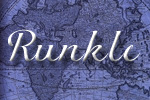 |
Runkle Geography Grades 6-10
Physical World Geography is a textbook/worktext approach. The earth itself is in focus, and the author evidences no specific ideology, whether Christian or evolutionistic. The course can be student-directed, though some parent interaction is recommended. Kids become conversant in everything from the atmosphere to map-reading skills through fun and creative activities and exercises.
|
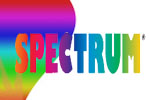 |
Spectrum geography Grades 3-6
If you'd rather not spend too much time on geography but want your kids up to snuff for testing or grading purposes, Spectrum Geography offers a series of workbooks to fill in the gaps and provide a raw sketch overview of the topic. We also carry maps, markable atlases, region-specific books, and other resources that can provide a more enjoyable method of geography study.
|
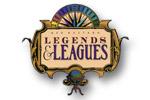 |
Veritas Press Geography (Legends & Leagues) Grades 1-6
There's no law that geography has to be boring, and Ned Bustard seems to be one of the few geography curriculum authors who actually gets that. His series is highly educational but also highly fun. None of the Legends & Leagues books are intended to be a full geography curriculum, however. These are supplements and introductions, and should be used as such
|
Along with math and writing, geography seems to be a subject many homeschool parents don't cover as well as they should, either because they don't think it's important, or because they don't know much about it themselves. We think it's very important, though we don't think you need to devote inordinate amounts of time to it, at least not formally. Give your kids the tools to understand maps and atlases, give them a globe, and let them explore on their own. These courses are a great place to build the foundations they'll need.
Review by C. Hollis Crossman
C. Hollis Crossman used to be a child. Now he's a husband and father who loves church, good food, and weird stuff. He might be a mythical creature, but he's definitely not a centaur. Read more of his reviews
here.
Did you find this review helpful?